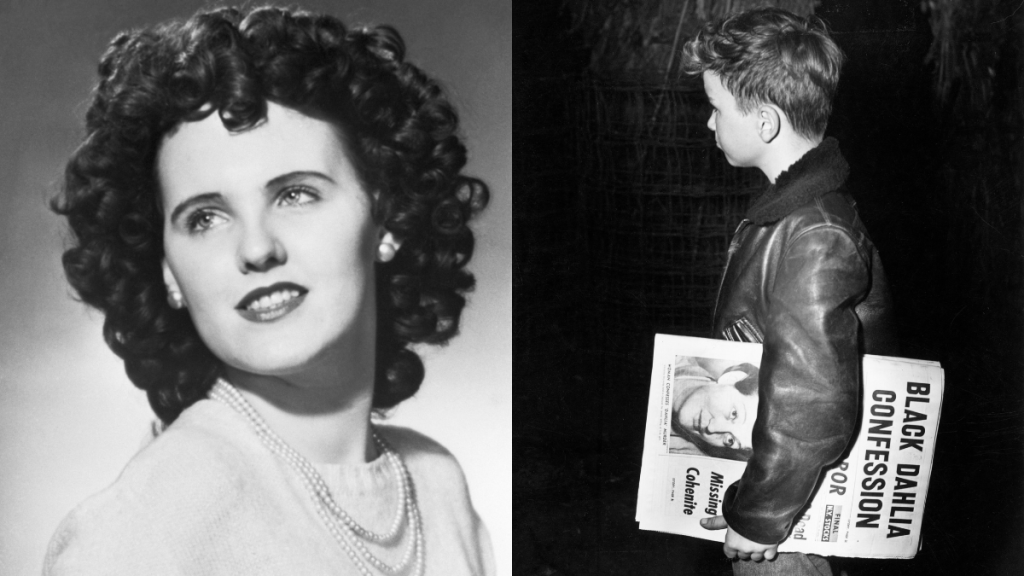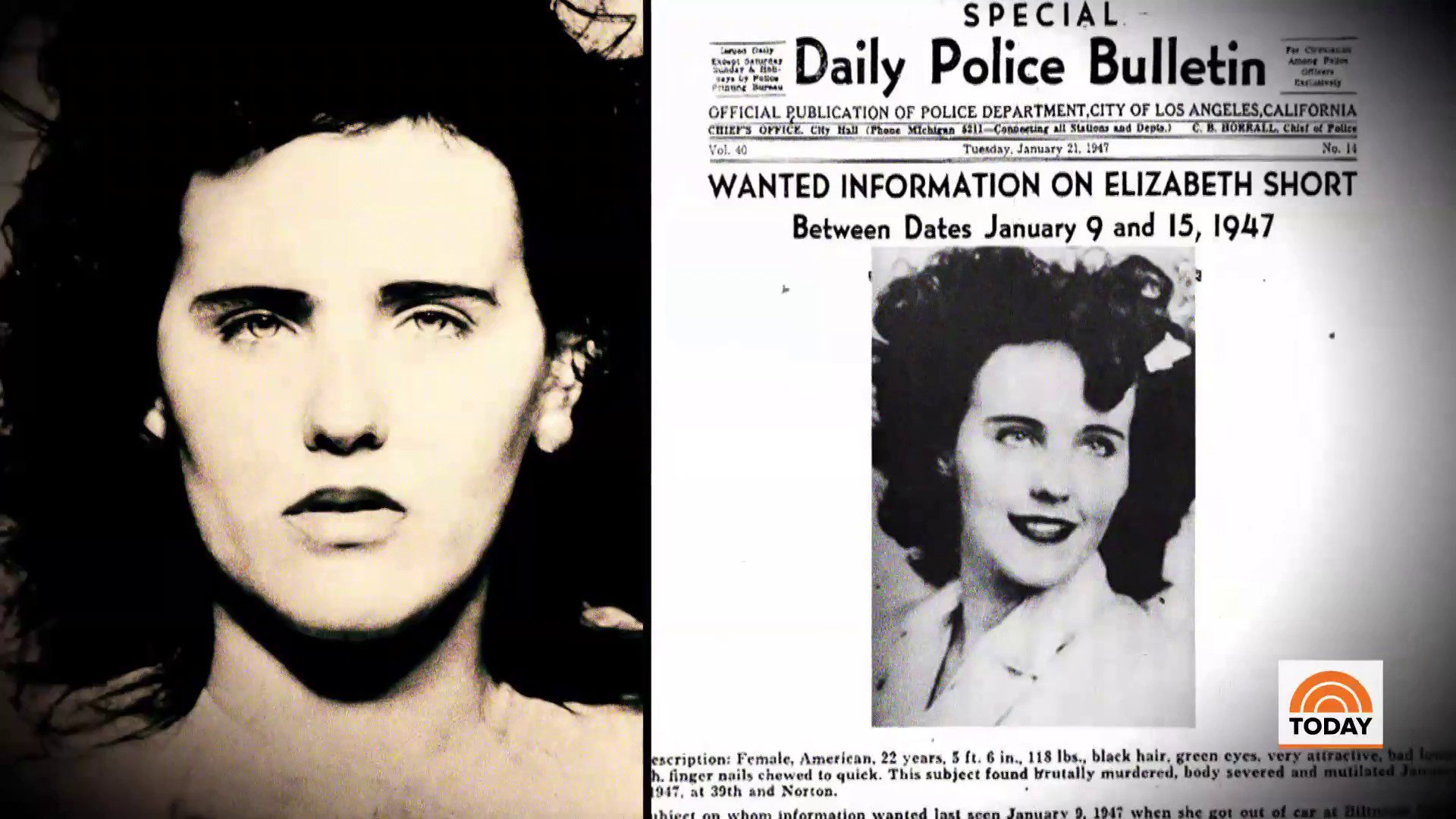Elizabeth Short Autopsy Photos: Unveiling The Mystery Behind The Black Dahlia Case
It’s one of the most chilling and unsolved mysteries in American history, but what exactly happened to Elizabeth Short? Known as "The Black Dahlia," her tragic story has haunted the public for decades. Her autopsy photos, though gruesome, hold vital clues that could unlock the secrets behind her murder. Let's dive deep into the case, uncovering the truth buried beneath layers of mystery.
Picture this: Los Angeles, 1947. The city buzzes with excitement and opportunity, but beneath its glittering surface lies a dark underbelly. On January 15th, a young woman’s body is discovered in a vacant lot—her face serene, her body grotesquely mutilated. This was Elizabeth Short, whose nickname "The Black Dahlia" would forever etch her name into history. But who was she, and why did her death leave such a haunting legacy?
As we explore the mystery surrounding Elizabeth Short autopsy photos, we’ll uncover not just the gruesome details but also the human side of a young woman whose life was tragically cut short. This isn’t just about solving a crime; it’s about understanding the person behind the headlines. So, buckle up, because this journey will take you through the twists and turns of one of the most baffling cases in modern history.
Read also:Is Megan Moroney A Liberal Exploring Her Political Identity
Table of Contents
- Biography of Elizabeth Short
- Understanding the Autopsy Photos
- The Mystery Behind the Black Dahlia Case
- A Timeline of Events
- The Investigation Process
- Popular Theories and Speculations
- Psychological Insights Into the Murder
- Forensic Evidence and Its Role
- Media Coverage and Public Reaction
- The Legacy of Elizabeth Short
Biography of Elizabeth Short
Before diving into the chilling autopsy photos and the mystery of the Black Dahlia case, it’s crucial to understand who Elizabeth Short really was. Born on July 29, 1924, in Boston, Massachusetts, Elizabeth was the second of five daughters in her family. Her life, though short, was marked by a series of moves and changes that eventually brought her to Los Angeles.
Elizabeth wasn’t your typical Hollywood starlet; she worked as a waitress and occasionally modeled. Known for her striking beauty and dark hair, she earned the nickname "The Black Dahlia" posthumously, inspired by the noir films of the era. But behind her glamorous facade lay a troubled soul searching for stability and purpose.
Personal Details
Here’s a glimpse into Elizabeth Short’s personal life:
| Full Name | Elizabeth Short |
|---|---|
| Nickname | The Black Dahlia |
| Date of Birth | July 29, 1924 |
| Place of Birth | Boston, Massachusetts |
| Date of Death | January 15, 1947 |
| Cause of Death | Murder (cause unknown) |
Understanding the Autopsy Photos
When discussing the Black Dahlia case, the autopsy photos inevitably come into play. These images, though graphic, provide critical insights into the nature of Elizabeth’s death. The photos reveal a horrifying scene: her body was severed at the waist, her face eerily calm despite the brutality of the crime.
But what do these photos tell us? Forensic experts have analyzed the wounds, noting precise cuts that suggest the killer had some medical knowledge. The body was meticulously posed, indicating a level of obsession and control. Each detail in the autopsy photos adds another layer to the mystery, making the case even more perplexing.
Key Findings from the Photos
- Her body was divided into two parts, with a clean cut at the waist.
- The facial expression appeared calm, possibly due to the use of a sedative.
- There were no signs of sexual assault, though the killer left her naked.
- Her mouth was cut from ear to ear in a grimace-like expression, known as "glossopharyngeal laceration."
The Mystery Behind the Black Dahlia Case
So, what makes the Black Dahlia case so mysterious? For starters, the investigation has never led to an arrest or conviction. Over the years, hundreds of suspects have been named, yet none have been conclusively linked to the crime. The lack of concrete evidence and the absence of a clear motive only deepen the enigma.
Read also:Exploring Elon Musks Partners And Kids A Comprehensive Look
Elizabeth Short autopsy photos play a pivotal role in unraveling the mystery. They provide clues about the killer’s methods and mindset. However, without additional evidence, such as DNA or fingerprints, solving the case remains an elusive dream for detectives and true crime enthusiasts alike.
Why Does the Case Remain Unsolved?
Several factors contribute to the case’s unsolved status:
- Limited forensic technology at the time of the murder.
- A flood of false confessions that overwhelmed investigators.
- The absence of a clear motive or connection to known associates.
A Timeline of Events
Understanding the timeline of the Black Dahlia case helps piece together the events leading to Elizabeth’s death. Here’s a brief overview:
- 1943: Elizabeth moves to Florida, working at a USO canteen.
- 1945: She travels to Los Angeles, hoping to find fame and fortune.
- January 15, 1947: Her body is discovered in a vacant lot in Leimert Park.
- January 22, 1947: The LAPD releases her name and details of the murder to the press.
Each step in this timeline reveals a bit more about Elizabeth’s journey and the circumstances surrounding her death. Yet, many questions remain unanswered.
The Investigation Process
The LAPD’s investigation into the Black Dahlia case was exhaustive, involving hundreds of detectives and thousands of leads. However, the sheer volume of information made it difficult to focus on the most promising suspects. The case files are filled with intriguing details, from anonymous letters to potential motives.
Modern forensic techniques, if applied to the evidence today, might yield new insights. DNA analysis, for instance, could identify the killer if biological material was preserved properly. Unfortunately, much of the original evidence has been lost or degraded over time.
Challenges Faced by Investigators
- False confessions flooded the LAPD, diverting resources.
- Media scrutiny pressured investigators, leading to rushed conclusions.
- Limited technology hindered the ability to analyze evidence effectively.
Popular Theories and Speculations
Over the decades, numerous theories have emerged about the Black Dahlia case. Some suggest Elizabeth knew her killer personally, while others believe she was a random victim of a deranged individual. One theory posits that the killer was inspired by the film "The Blue Dahlia," released just months before her death.
Despite the plethora of theories, none have been proven conclusively. The lack of physical evidence and the passage of time make it increasingly unlikely that the truth will ever be fully uncovered.
Top Theories About the Black Dahlia Case
- The killer was a serial murderer targeting young women.
- Elizabeth was involved in criminal activities, leading to her demise.
- The crime was a revenge act by someone she had crossed paths with.
Psychological Insights Into the Murder
Understanding the psychology of the Black Dahlia case requires delving into the mind of the killer. Forensic psychologists suggest that the meticulous nature of the crime indicates a high level of planning and control. The killer likely had a deep-seated hatred or obsession with Elizabeth, or perhaps viewed her as a symbol rather than a person.
Elizabeth Short autopsy photos reveal a level of precision that suggests the killer had some knowledge of anatomy. This raises questions about their background and potential career in medicine or a related field.
What Can We Learn About the Killer?
- They were methodical and detail-oriented.
- They may have had access to medical or forensic knowledge.
- They exhibited signs of obsession or fixation on their victim.
Forensic Evidence and Its Role
Forensic evidence plays a crucial role in any investigation, and the Black Dahlia case is no exception. While the technology of the 1940s was limited, modern advancements could potentially shed new light on the case. DNA testing, fingerprint analysis, and ballistics could all contribute to identifying the killer if applied to preserved evidence.
However, the passage of time has diminished the chances of finding new leads. Many of the original pieces of evidence have been lost or degraded, leaving investigators with fewer tools to work with.
Media Coverage and Public Reaction
The media frenzy surrounding the Black Dahlia case was unprecedented. Newspapers across the country covered the story extensively, fueling public curiosity and outrage. The nickname "The Black Dahlia" itself was coined by reporters, inspired by the noir films of the era.
Public reaction ranged from shock and horror to morbid fascination. The case captivated audiences, turning Elizabeth into a symbol of both beauty and tragedy. Even today, her story continues to inspire books, films, and documentaries, keeping her memory alive.
The Legacy of Elizabeth Short
Though her life was tragically cut short, Elizabeth Short’s legacy endures. Her story serves as a reminder of the dangers faced by women and the importance of justice in even the most challenging cases. The Black Dahlia case remains an open wound in the annals of true crime, a testament to the enduring power of mystery and intrigue.
Elizabeth Short autopsy photos, while unsettling, offer a glimpse into the darker side of human nature. They challenge us to confront the horrors that can lurk beneath the surface of everyday life. By remembering Elizabeth, we honor her memory and strive for a world where such crimes are no longer possible.
Conclusion
In conclusion, the Black Dahlia case is a complex tapestry of mystery, tragedy, and unanswered questions. Elizabeth Short autopsy photos provide vital clues, yet the full picture remains elusive. As we continue to explore the case, we must remember the person behind the headlines—a young woman whose life was tragically cut short.
I urge you to share this article, delve deeper into the case, and join the conversation. Together, we can keep Elizabeth’s memory alive and strive for a world where justice prevails. Leave a comment below—what do you think happened to Elizabeth Short? The mystery continues…


